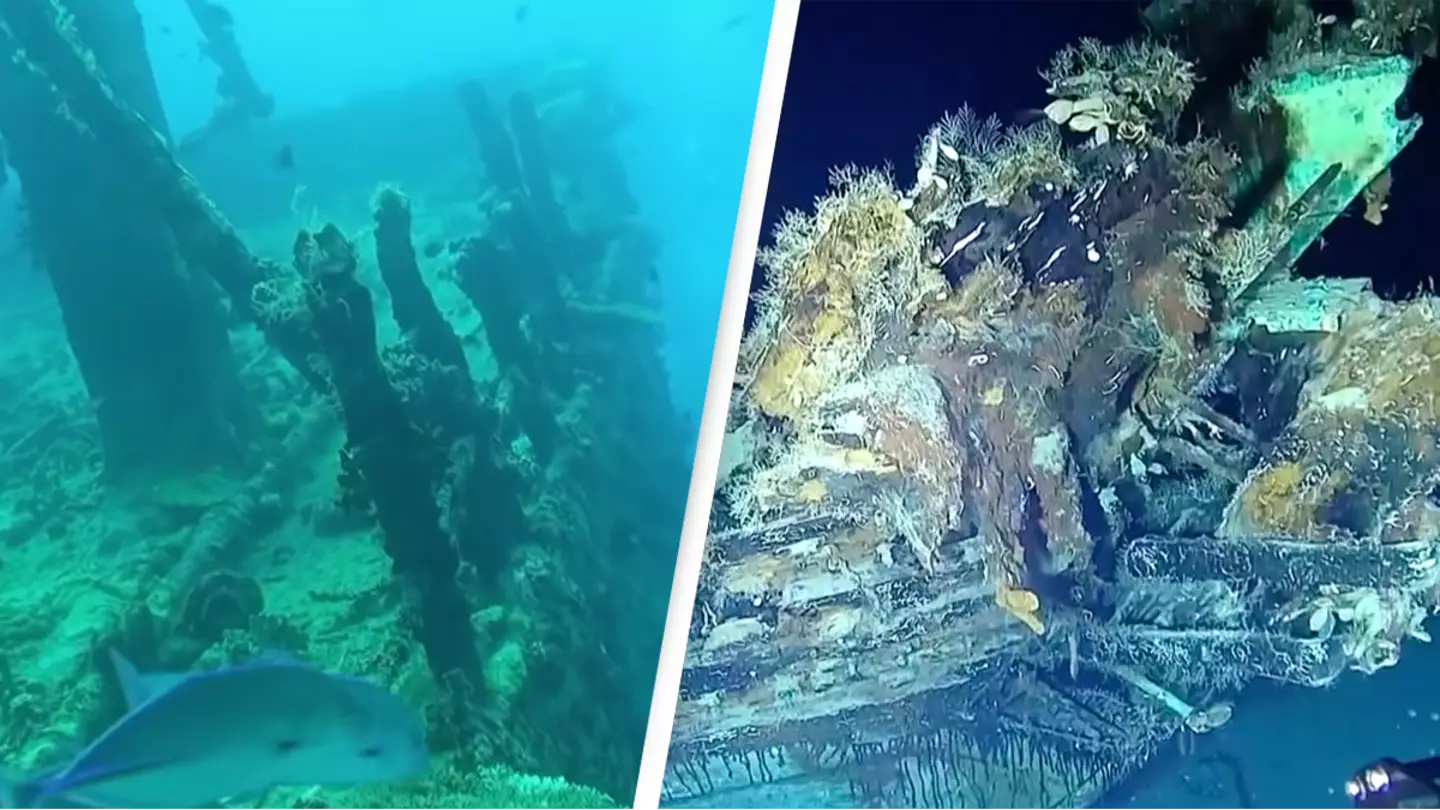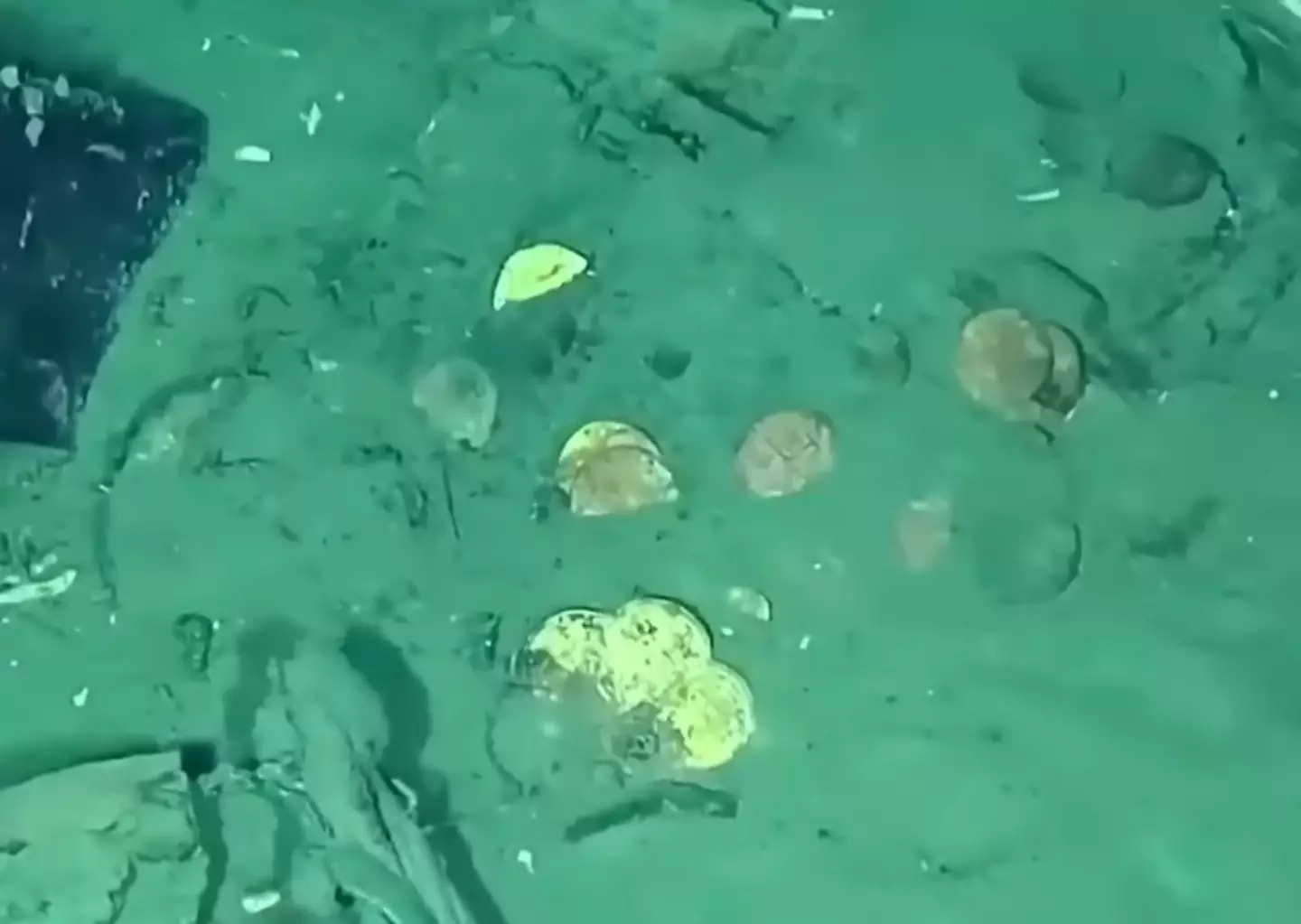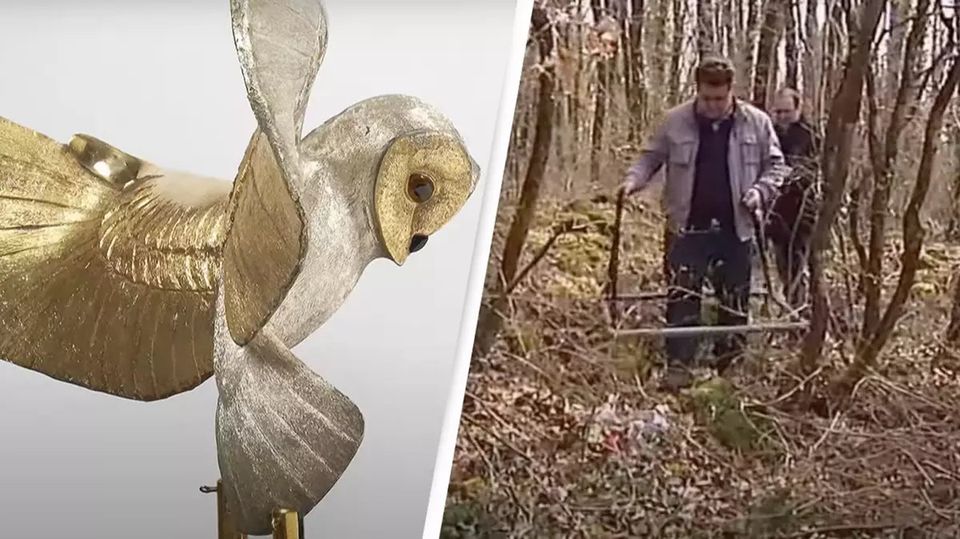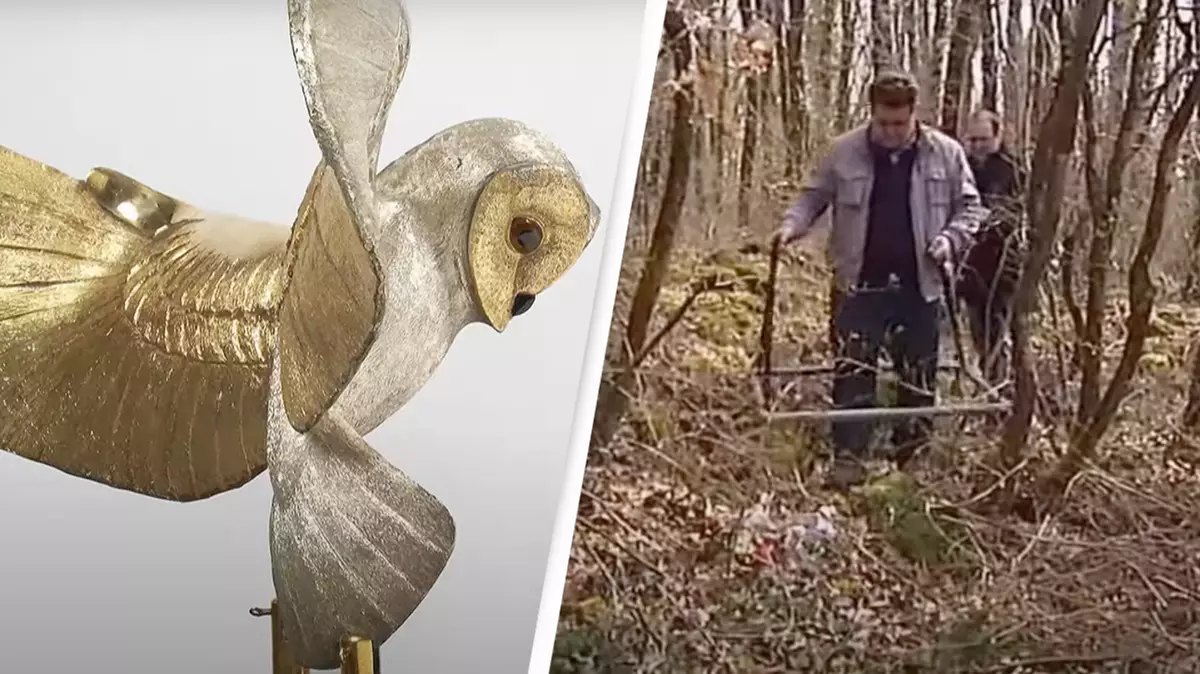The decades-long search reportedly came to an end earlier this month
A 31-year-long treasure hunt in France appears to have come to an end after official social media accounts linked to the search said the token needed to claim the grand prize has been found.
The hunt,
On The Trail Of The Golden Owl
, was based on a book of riddles published in 1993.
Participants had to solve 11 puzzles in the book — and a 12th one that was hidden — to find the exact location of the token.
“Don’t go digging!” warned a message on a channel on the chat app Discord with tens of thousands of followers.
“We confirm that the Golden Owl countermark was unearthed last night [October 2],” the message read, unleashing a wave of sad and crying emojis. “It is therefore useless to go digging.”
The solutions provided by those who claimed to have unearthed the token are being vetted, the message said.
The book, published in 1993 by author Regis Hauser and artist Michel Becker, built a cult-like following with a community of more than 200,000 players, known as ‘owlers’, from France and abroad, according to the hunt’s official website.

The owl was buried over 30 years ago (FRANCE 24 English)
In a documentary posted on YouTube, Mr Becker said he oversaw and financed the creation of the prize – an owl made of 3kg of gold and 7kg of silver with diamond chips on its face.
Events where ‘owlers’ could meet and share tips were organised across France.
Mr Hauser, the intellectual architect of the riddles, had initially used the pen name Max Valentin to prevent the most assiduous treasure hunters from seeking him out. He died in 2009, French newspaper Le Monde reported.
He and Mr Becker decided to bury a replica of the owl, keeping the precious original in a safe place. Its value is estimated at 150,000 euros ($164,663), fans of the treasure hunt have said online.

People searched far and wide to unearth the expensive treasure (FRANCE 24 English)
In order to claim the treasure, the winning player would need to submit the replica along with the answers to all of the book’s riddles.
On Discord, members of the hunt channel were quick to react to the news that the replica owl may have been found, with thousands of messages pouring in.
“Time to get the tissues out,” one wrote, as another said: “It’s the end of an era.”
According to a 2021 documentary, the concept was inspired by
The Masquerade
, a 1979 book of riddles by Kit Williams, where hunters also had to solve several puzzles to find a golden rabbit

Man kept 34kg pearl under his bed for 10 years without realizing it was worth a staggering amount
The giant pearl is said to have been found while the man was fishing
A fisherman has admitted to keeping a pearl under his bed for a decade, which could be the largest natural pearl ever found in history.
The man, from the Philippines found an enormous pearl 30cm wide and 67cm long and weighs an incredible 34kg.
If valuators confirm that it was actually formed inside of a giant clam, it could make this man rich overnight.
According to Palawan News, the fisherman from Puerto Princesa found it over 10 years ago while he was fishing in the sea.
The local news outlet reported that he found it when his boat’s anchor caught on a giant clam, and he had to jump into the water to unstick the two.
However, when he found the pearl, he kept it as a good luck charm and stowed it under his bed.
It was when he moved to another part of the province that he gave his aunt the pearl.
Aileen Cynthia Maggay-Amurao works at the local government as a tourism officer, and he brought it over to her.
She told the Guardian: “That’s why he brought it to me, since it’s quite heavy.”
She explained that she’s now looking to experts to authenticate the pearl so it can be valued.
She said: “So far based on our research in the web we cannot find any recorded article about this kind and as big as this size.
“He said every time he goes out for fishing, he will touch the pearl.”
However, if it is confirmed to have come from a giant clam, it would likely be valued in excess of $100m, which would make the man a multi-millionaire overnight.
For the time being, the man’s aunt, with his permission, gave their mayor Lucilo R Bayon the pearl as a tourist attraction and now it is sitting in New Green City Hall in Puerto Princesa.

It could break world records (Getty Stock Image)
In her bid to search for answers about how valuable the pearl could be, Maggay-Amurao asked Facebook experts and wrote: “The Puerto Princesa City would likely earn another prestigious title and a record breaker for having the world’s biggest natural giant pearl from a giant clam (34 kilograms) after being certified for its authenticity.
“Need help from gemologists!
“Just for the info of everyone, all recorded giant pearls in the world came from Palawan waters.”
She wants all residents of the island and surrounding areas to help raise awareness of the pearl and seemed to have received an amazing response as the post was shared thousands of times.
If the pearl is found to be authentic, it’ll beat the world’s current biggest pearl, which was found by a local diver from Brooke’s Point in Palawan, dubbed the Pearl of Lao Tzu.
This one weighed 6.4kg when it was found in 1939.
If it’s real, it’s almost 30kg bigger.
In 2003, the record-holder was valued as $93m by Colorado Springs’ gemologist Michael Steenrod

Shipwreck worth $17,000,000,000 is being recovered after 316 years underwater
The ship was lost for centuries after being sunk by British warships
A Spanish ship worth an estimated $17 billion is set to be recovered after being hidden underwater for centuries.
It was 1708 when the San José ship met its fate in a battle against British warships upon it’s journey back to Spain, causing it to sink into the ocean off the coast of Colombia.
When it did, it took with it the lives of 600 people, as well as treasure made up of 200 tons of silver and emeralds, 11 million gold coins, an intact Chinese dinner service and porcelain pottery, according to findings by Colombian Navy divers in June 2022.
The cargo was intended to help fund The War of the Spanish Succession, which took place between 1701 to 1714, but it remained lost for centuries after the sinking.
It wasn’t until 2015 the $17 billion ship was rediscovered, when former Colombian President Juan Manuel Santos described it as the ‘most valuable treasure that has been found in the history of humanity’.

NBC News
Still, the ship went untouched, with a press release from Colombian officials explaining: “So far, the entire discovery of the Galeón San José Asset of Cultural Interest and its archaeological evidence have been deposited without any variation, other than that produced by the marine dynamics themselves (currents and fauna), with no evidence of external interventions.”
Almost a decade on from its discovery, officials have announced that it will invest 17,962 million pesos ($1,073,646) into the process needed to recover the ship as soon as April.
The recovery will be a joint effort between the Ministry of Cultures, Arts and Knowledge, the National Navy’s General Maritime Directorate and the Colombian Institute of Anthropology and History.

NBC News
“For the first time in history, a model of comprehensive public management of the archaeological site and asset of cultural interest, protected by regulations and public missionality, is advanced,” the Colombian government said in the news release.
Last month, Culture Minister Juan David Correa told Agence France-Presse that the recovery team will utilise the help of an underwater robot to help recover some of the treasure on board.
Correa explained that the robot would extract some items from the surface of the ship to see ‘how they materialize when they come out (of the water)’ and help inform the recovery effort going forward.

NBC News
The recovery comes after the discovery of the ship sparked debate over who it legally belonged to, with Colombia, Spain, Bolivian Indigenous groups and even an American salvage company all attempting to claim ownership over the years.
In 2018, UNESCO made the decision to intervene when the Colombian government tried to auction some of the ship’s treasures to fund recovery costs.
It was later decided in May 2022 to keep the ‘invaluable cultural heritage of Colombians managed under the figure of a protected archaeological area of the national order’.

